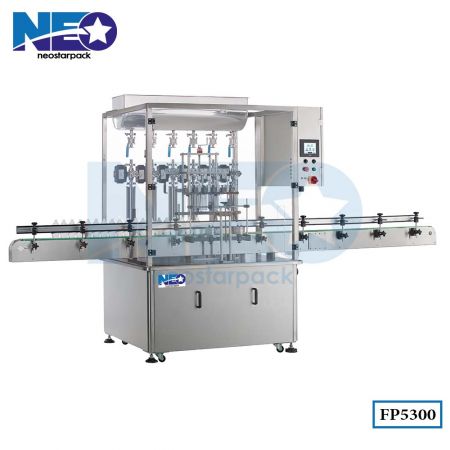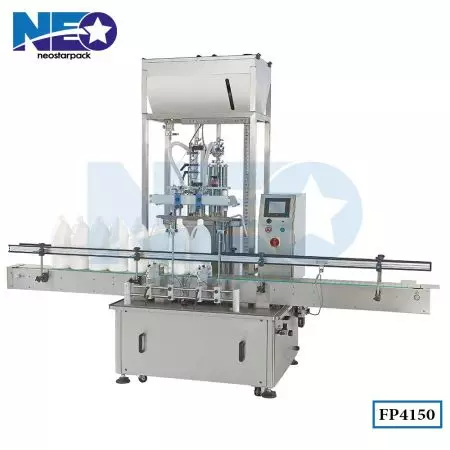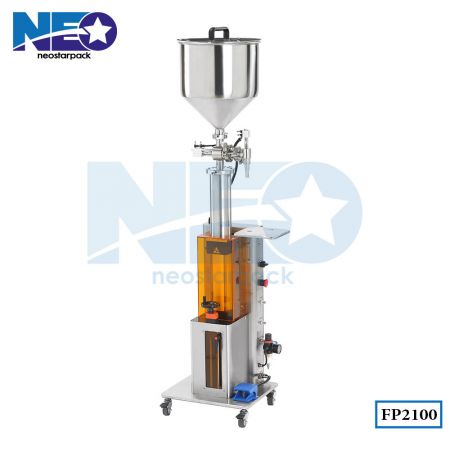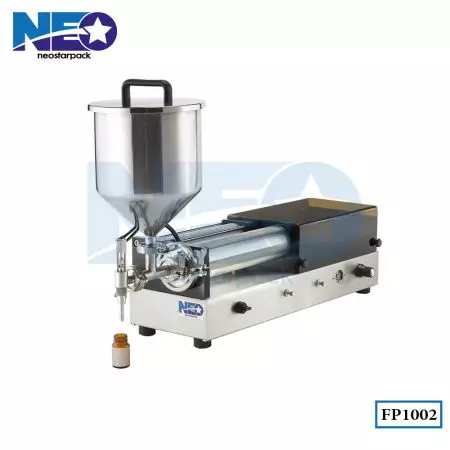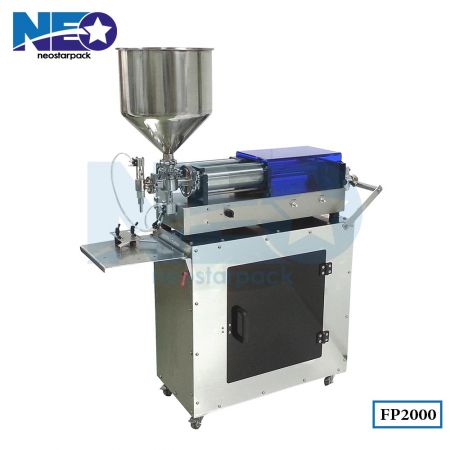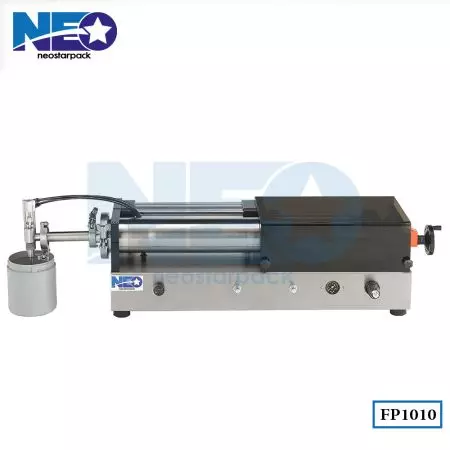
81. How to Choose the Best Dish Soap Filling Machine? Solve Viscosity, Speed, Accuracy, and Clogging Challenges.
What’s the best filling machine for dishwashing liquid—and how can it improve speed, accuracy, and overall productivity?
Choosing the right filling machine is a crucial step in dishwashing liquid production.
While dishwashing liquid may seem like a simple, free-flowing product, its viscous texture and foaming behavior can pose serious challenges during the filling process. These characteristics often affect production speed, accuracy, and consistency.
To help manufacturers overcome these challenges, Neostarpack has identified the most common issues our customers face when filling dishwashing liquids.
With the right filling solution, you can increase throughput, reduce waste, and ensure consistent product quality.
Q1: Which type of filling machine is best for dishwashing liquid?
For most dishwashing liquid filling applications, piston filling machines and servo pump (gear pump) filling machines are the most suitable choices. These two types of equipment excel at precisely handling the medium-to-high viscosity characteristic of dishwashing liquid, consistently delivering stable and accurate fills.
• Piston Filling Machines: Neostarpack’s FP series is specifically designed for thick and highly viscous liquids. These machines utilize piston cylinders to draw in and dispense the product with high precision, ensuring consistent fill volumes every time.
• Servo Pump Filling Machines (Gear Pumps): Neostarpack’s FG series uses pumps precisely controlled by servo motors to deliver liquid. These machines offer high versatility, not only handling medium to high-viscosity liquids but also being easy to clean and quick to change over for different products. This makes them ideal for manufacturers producing multiple types of similar cleaning products on the same line.
Gravity fillers are generally not recommended for dishwashing liquid. Their inability to effectively manage the product's viscosity often leads to slow filling speeds and insufficient accuracy.
Q2: What characteristics of dishwashing liquid affect the filling process?
Two main properties of dishwashing liquid significantly impact filling machine selection and setup:
1. Viscosity: Dish soaps range from 1,000 to over 12,000 cps depending on formulation. Higher viscosity means slower flow, which requires a more powerful and precise filling system to maintain speed and accuracy.
2. Foaming: Surfactants in dish soap create foam during filling, especially when agitated or poured aggressively. Excess foam leads to common problems like underfills, uneven fill levels, and messy overflows, impacting production cleanliness and product accuracy.
Understanding these traits helps you prevent common problems like underfills, product waste, and inconsistent output, ensuring high-efficiency production.
Q3: Why does thicker dish soap fill more slowly, and how can you maintain speed and accuracy?
Viscous liquids naturally flow more slowly and resist movement through filling lines. If your machine isn't powerful enough, it will struggle to push product through, resulting in:
• Reduced filling speed: Higher viscosity directly increases liquid flow resistance, slowing movement through pipes and valves. Attempting to speed up the process without proper equipment can lead to excessive pressure, underfilling, and even machine wear.
• Compromised accuracy: High-viscosity liquids can cause "stringing" or dripping at the end of the fill cycle, affecting precision. Insufficient power can also lead to inconsistent volumes per fill.
The Neostarpack Solution: To achieve both speed and precision with viscous products, you must choose filling machines with adequate power, such as piston or servo pump systems, combined with appropriate control technology.
Q4: What machine features help improve dishwashing liquid filling performance?
Look for these advanced features to ensure efficient, accurate, and clean dish soap filling:
• Bottom-Up Filling (Sub-Surface Nozzles): The filling nozzle descends to the container's bottom and rises with the liquid level, keeping the nozzle submerged. This significantly reduces air entrapment and foam formation, ensuring a smooth fill.
• Positive Displacement Pumps: Such as piston pumps or gear pumps, these actively and powerfully push viscous liquids. Their fill volume is unaffected by product viscosity, ensuring high-precision filling.
• Anti-Drip / Drip-Free Nozzles: Specially designed filling heads instantly close at the end of the fill cycle, effectively preventing stringing or dripping from high-viscosity liquids. This keeps bottle openings and the production environment clean while maintaining filling accuracy.
• Variable Speed Control: Allows you to adjust filling speed based on different product viscosities and bottle sizes, optimizing throughput without compromising precision.
Q5: Why do filling machines clog when filling thick dish soap? How can it be fixed?
Clogs and slowdowns are common when handling thick liquids due to their high flow resistance. Key factors include:
1. Decreased Flow Rate: Thick liquids move slowly through filling lines. If the filling machine lacks sufficient power, the product won't pass smoothly, extending filling times and reducing output.
2. Filling Tube Clogs: This is a common issue. Filling tubes with too small a diameter become bottlenecks, where high-viscosity liquid can accumulate and cause blockages, leading to inconsistent flow or complete stoppage.
3. Pump Overload: Using a filling machine designed for low-viscosity liquids to handle thicker products can overload its pump or motor. This not only lowers efficiency but can also cause overheating and potential equipment damage.
To resolve these issues, you must select the correct filling equipment, such as more powerful piston-type or servo pump filling machines, paired with larger diameter filling tubes that match your product's viscosity.
Q6: What if dish soap thickens in cold weather and affects filling accuracy?
Dish soaps containing thickeners are often sensitive to temperature. Especially in winter, the same formulation may become significantly more viscous due to lower environmental temperatures.
When viscosity increases due to temperature drops:
• Filling speed will slow down: Your production line might not reach its expected output capacity.
• Filling accuracy may decrease: If you are not using a volumetric system, slower flow means less actual fill volume in the same filling time, leading to underfilled containers.
This highlights the importance of choosing piston-type or servo pump filling machines. Because they are volumetric fillers, they ensure a consistent volume is dispensed each time, regardless of changes in liquid flow rate or viscosity. This guarantees filling accuracy remains uncompromised by temperature-induced viscosity changes.
Investing in the right filling machine is a critical decision for scaling your production while maintaining consistency and quality.
At Neostarpack, our expert team provides customized solutions based on your product's characteristics (viscosity, foaming behavior, bottle type) and production requirements.
📩 Contact us now : info@neostarpack.com
Read More FAQs:
1. Do you need to fill oil products? It is vital to choose the proper filling machine for it.
- Related Products
Safety Cover High Speed Piston Pump Filling Machine
FP5300
On the product lines where high efficiency and sanitation are a must, Piston Pump Filling Machine...
DetailsAutomatic Piston Liquid Filling Machine
FP4150
Automatic two nozzles piston filler FP4150 is designed for general flowing liquids and liquids...
DetailsAutomatic 6 Nozzles Piston Filler
FP4300
The Automatic 6 Nozzles Piston Filler FP4300 utilizes a linear conveyor, with a servo motor...
DetailsSemi-Automatic Piston Pump Filling Machine
FP2100
Semi-automatic piston pump filling machine is the common design of the piston filler. Neostarpack...
DetailsTabletop Piston Pump Liquid Filling Machine
FP1005
Tabletop piston liquid filler fp1005 is available for products like cleanser, dishwashing liquid,...
DetailsTabletop Piston Filling Machine
FP1002
Tabletop piston filling machine FP1002 suits for small filling volume requirement, cylinder...
DetailsEnergy Saving Ration Liquid Filling Machine
FP2000
1. Suitable for medium viscosity liquid (such as lotion, oil and sauce) and liquid under 60 degree...
DetailsBig Volume Tabletop Piston Pump Liquid Filling Machine
FP1010
Big volume tabletop piston pump liquid filling machine FP1010 is designed for slightly thick...
Details

